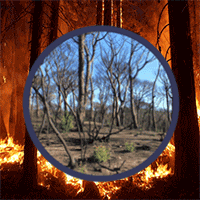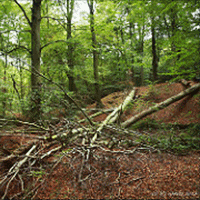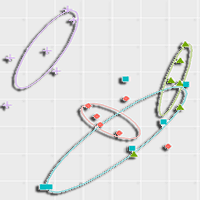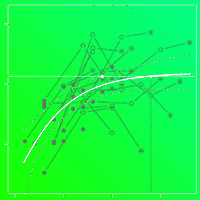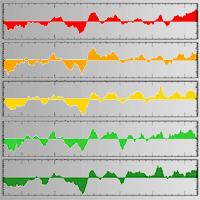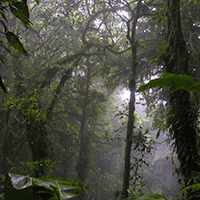An average of 213,000 ha of European forest is affected by fire every year, with 90% of this area corresponding to Mediterranean countries. The timber of the burned forests is usually harvested by clearcutting over large areas to be used mainly as bioenergy. Recent scientific evidence has shown the strong impact that these “salvage logging” practices have on the ecosystem. However, forest owners and companies largely ignore academic debate, and salvage logging decisions are usually taken for economic, practical and emotional reasons. We propose a process to connect scientists and practitioners with the aim of providing evidence-based guidelines to protect biodiversity and ecosystem services, which can be used as a general model. The process involves five steps: (1) to review the available scientific knowledge on post-fire forest management; (2) to synthesize the information to produce a handbook of best practices in Mediterranean burned forests; (3) to provide a tool to help decision-making in post-fire management; (4) to actively disseminate this knowledge to the forest sector; and (5) to fill knowledge gaps with new experimental studies aimed to assess the environmental impact of some of the most feasible management alternatives. The feedback of the forest sector has been obtained along the process, and recommendations for better practices are already being promoted among forest owners by the administration. We suggest that similar processes can be conducted in other socio-environmental contexts to improve the management of disturbed forests and to generalize our knowledge on the topic.
Keywords
, , , , ,
Citation
Pons P, Rost J, Tobella C, Puig-Gironès R, Bas JM, Franch M, Mauri E (2020). Towards better practices of salvage logging for reducing the ecosystem impacts in Mediterranean burned forests. iForest 13: 360-368. - doi: 10.3832/ifor3380-013
Academic Editor
Davide Ascoli
Paper history
Received: Feb 20, 2020
Accepted: Jun 15, 2020
First online: Aug 25, 2020
Publication Date: Oct 31, 2020
Publication Time: 2.37 months
© SISEF - The Italian Society of Silviculture and Forest Ecology 2020
Open Access
This article is distributed under the terms of the Creative Commons Attribution-Non Commercial 4.0 International (https://creativecommons.org/licenses/by-nc/4.0/), which permits unrestricted use, distribution, and reproduction in any medium, provided you give appropriate credit to the original author(s) and the source, provide a link to the Creative Commons license, and indicate if changes were made.

Breakdown by View Type
(Waiting for server response...)
Article Usage
Total Article Views: 40257
(from publication date up to now)
Breakdown by View Type
HTML Page Views: 33722
Abstract Page Views: 3085
PDF Downloads: 2663
Citation/Reference Downloads: 6
XML Downloads: 781
Web Metrics
Days since publication: 1957
Overall contacts: 40257
Avg. contacts per week: 144.00
Article Citations
Article citations are based on data periodically collected from the Clarivate Web of Science web site
(last update: Mar 2025)
Total number of cites (since 2020): 5
Average cites per year: 0.83
Publication Metrics
by Dimensions ©
Articles citing this article
List of the papers citing this article based on CrossRef Cited-by.
(1)
Alloza JA, García S, Gimeno T, Baeza J, Vallejo R, Rojo L, Martínez A (2014)Guía técnica para la gestión de montes quemados. Protocolos de actuación para la restauración de zonas quemadas con riesgo de desertificación [Technical guide for the management of burned forests. Action protocols for the restoration of burned areas at risk of desertification]. Ministerio de Agricultura, Alimentación y Medio Ambiente, Madrid, Spain, pp. 185. [in Spanish]
Gscholar
(2)
Ascoli D, Castagneri D, Valsecchi C, Conedera M, Bovio G (2013)Post-fire restoration of beech stands in the Southern Alps by natural regeneration. Ecological Engineering 54: 210-217.
CrossRef |
Gscholar
(3)
Azeria ET, Ibarzabal J, Hébert C, Boucher J, Imbeau L, Savard J-PL (2011)Differential response of bird functional traits to post-fire salvage logging in a boreal forest ecosystem. Acta Oecologica 37: 220-229.
CrossRef |
Gscholar
(4)
Boulanger Y, Sirois L, Hebert C (2010)Distribution of saproxylic beetles in a recently burnt landscape of the northern boreal forest of Quebec. Forest Ecology and Management 260: 1114-1123.
CrossRef |
Gscholar
(5)
Bros V, Moreno-Rueda G, Santos X (2011)Does postfire management affect the recovery of Mediterranean communities? The case study of terrestrial gastropods. Forest Ecology and Management 261: 611-619.
CrossRef |
Gscholar
(6)
Brown JK, Reinhardt ED, Kramer KA (2003)Coarse woody debris: managing benefits and fire hazard in the recovering forest. USDA Forest Service, Rocky Mountain Research Station, Ogden, UT, USA, pp. 16.
Online |
Gscholar
(7)
Castillo-Escrivà A, López-Iborra GM, Cortina J, Tormo J (2019)The use of branch piles to assist in the restoration of degraded semiarid steppes. Restoration Ecology 27: 102-108.
CrossRef |
Gscholar
(8)
Castro J, Moreno-Rueda G, Hódar JA (2010)Experimental test of postfire management in pine forests: impact of salvage logging versus partial cutting and nonintervention on bird-species assemblages. Conservation Biology 24: 810-819.
CrossRef |
Gscholar
(9)
Cervera T, Pino J, Marull J, Padró R, Tello E (2019)Understanding the long-term dynamics of forest transition: from deforestation to afforestation in a Mediterranean landscape (Catalonia, 1868-2005). Land Use Policy 80: 318-331.
CrossRef |
Gscholar
(10)
CREAF (1997)Sistema d’Informació dels Boscos de Catalunya (SIBosC) [Forest Information System of Catalonia]. Centre de Recerca Ecològica i Aplicacions Forestals - CREAF, Bellaterra, Spain. [in Catalan].
Online |
Gscholar
(11)
Franklin JF, Lindenmayer D, MacMahon JA, McKee A, Magnuson J, Perry DA, Waide R, Foster D (2000)Threads of continuity. Conservation in Practice 1: 8-17.
CrossRef |
Gscholar
(12)
García-Morote F, Martínez-García E, Andrés-Abellán M, Caballero E, Miettinen H, López-Serrano F (2017)Direct seeding of
Pinus halepensis Mill. for recovery of burned semi-arid forests: implications for post-fire management for improving natural regeneration. Forests 8 (9): 353.
CrossRef |
Gscholar
(13)
Ginzburg O, Steinberger Y (2012)Salvage logging versus natural regeneration post-fire practices in a forest: soil chemical and microbial aspects. Open Journal of Ecology 2: 29-37.
CrossRef |
Gscholar
(14)
Herrando S, Brotons L, Guallar S, Sales S, Pons P (2009)Postfire forest management and Mediterranean birds: the importance of the logging remnants. Biodiversity and Conservation 18: 2153-2164.
CrossRef |
Gscholar
(15)
Izhaki I, Adar M (1997)The effects of post-fire management on bird community succession. International Journal of Wildland Fire 7: 335-342.
CrossRef |
Gscholar
(16)
James CE, Krumland B (2018)Immediate post-forest fire salvage logging, soil erosion, and sediment delivery. Forest Science 64 (3): 246-267.
CrossRef |
Gscholar
(17)
Koivula MJ, Schmiegelow FKA (2007)Boreal woodpecker assemblages in recently burned forested landscapes in Alberta, Canada: effects of post-fire harvesting and burn severity. Forest Ecology and Management 242 (2-3): 606-618.
CrossRef |
Gscholar
(18)
Koivula M, Spence JR (2006)Effects of post-fire salvage logging on boreal mixed-wood ground beetle assemblages (Coleoptera, Carabidae). Forest Ecology and Management 236 (1): 102-112.
CrossRef |
Gscholar
(19)
Leverkus AB, Lorite J, Navarro FB, Sánchez-Cañete EP, Castro J (2014)Post-fire salvage logging alters species composition and reduces cover, richness, and diversity in Mediterranean plant communities. Journal of Environmental Management 133: 323-331.
CrossRef |
Gscholar
(20)
Leverkus AB, Benayas JMR, Castro J (2016)Shifting demographic conflicts across recruitment cohorts in a dynamic post-disturbance landscape. Ecology 97 (10): 2628-2639.
CrossRef |
Gscholar
(21)
Leverkus AB, Rey Benayas JM, Castro J, Boucher D, Brewer S, Collins BM, Donato D, Fraver S, Kishchuk BE, Lee E-J, Lindenmayer DB, Lingua E, Macdonald E, Marzano R, Rhoades CC, Royo A, Thorn S, Wagenbrenner JW, Waldron K, Wohlgemuth T, Gustafsson L (2018)Salvage logging effects on regulating and supporting ecosystem services - a systematic map. Canadian Journal of Forest Research 48: 983-1000.
CrossRef |
Gscholar
(22)
Leverkus AB, Murillo PG, Doña VJ, Pausas JG (2019)Wildfires: Opportunity for restoration? Science 363 (6423): 134-135.
CrossRef |
Gscholar
(23)
Lindenmayer DB, Burton PJ, Franklin JF (2008)Salvage logging and its ecological consequences. Island Press, Washington, USA, pp. 227.
Gscholar
(24)
Lombardi F, Lasserre B, Tognetti R, Marchetti M (2008)Deadwood in relation to stand management and forest type in Central Apennines (Molise, Italy). Ecosystems 11: 882-894.
CrossRef |
Gscholar
(25)
Malvar MC, Silva FC, Prats SA, Vieira DCS, Coelho COA, Keizer JJ (2017)Short-term effects of post-fire salvage logging on runoff and soil erosion. Forest Ecology and Management 400: 555-567.
CrossRef |
Gscholar
(26)
Marañón-Jiménez S, Castro J (2013)Effect of decomposing post-fire coarse woody debris on soil fertility and nutrient availability in a Mediterranean ecosystem. Biogeochemistry 112: 519-535.
CrossRef |
Gscholar
(27)
Marañón-Jiménez S, Castro J, Querejeta JI, Fernandez-Ondono E, Allen CD (2013)Post-fire wood management alters water stress, growth and performance of pine regeneration in a Mediterranean ecosystem. Forest Ecology and Management 308: 231-239.
CrossRef |
Gscholar
(28)
Martin A (2019)Com actuar correctament en aquelles zones afectades per un incendi forestal? [How to act properly in those areas affected by a forest fire?]. Silvicultura 80: 45-46. [in Catalan]
Gscholar
(29)
Mauri E, Pons P (2016)Fichas de buenas prácticas para la gestión forestal postincendio [Factsheets of good practices in post-wildfire forest management]. Proyecto Anifog, Universitat de Girona, Girona, Spain, pp. 116. [in Spanish]
Gscholar
(30)
Mauri E, Pons P (2019)Handbook of good practices in post-wildfire management. Proyecto Anifog, Universitat de Girona, Girona, Spain, pp. 169.
Online |
Gscholar
(31)
Mavsar R, Varela E, Corona P, Barbati A, Marsh G (2012)Economic, legal and social aspects of post-fire management. In: “Post-Fire Management and Restoration of Southern European Forests” (Moreira F, Arianoutsou M, Corona P, De las Heras J eds). Series “Managing Forest Ecosystems”, vol. 24, Springer, Dordrecht, the Netherlands, pp. 45-78.
CrossRef |
Gscholar
(32)
Moreira F, Arianoutsou M, Vallejo VR, de las Heras J, Corona P, Xanthopoulos G, Fernandes P, Papageorgiou K (2012)Setting the scene for post-fire management. In: “Post-Fire Management and Restoration of Southern European Forests” (Moreira F, Arianoutsou M, Corona P, De las Heras J eds). Series “Managing Forest Ecosystems”, vol. 24, Springer, Dordrecht, the Netherlands, pp. 1-19.
CrossRef |
Gscholar
(33)
Nabuurs G-J, Delacote P, Ellison D, Hanewinkel M, Lindner M, Nesbit M, Ollikainen M, Savaresi A (2015)A new role for forests and the forest sector in the EU post-2020 climate targets. From Science to Policy 2. European Forest Institute, Joensuu, Finland, pp. 32.
CrossRef |
Gscholar
(34)
Nappi A, Déry S, Bujold F, Chabot M, Dumont M-C, Duval J, Drapeau P, Gauthier S, Brais S, Peletier J, Bergeron I (2011)La récolte dans les forêts brûlées - Enjeux et orientations pour un aménagement écosystémique [Harvesting in burned forests - Challenges and guidelines for ecosystem management]. Ministère des Ressources naturelles et de la Faune, Québec, Canada, pp. 51. [in French]
Gscholar
(35)
Nitschke CR (2005)Does forest harvesting emulate fire disturbance? A comparison of effects on selected attributes in coniferous-dominated headwater systems. Forest Ecology and Management 214: 305-319.
CrossRef |
Gscholar
(36)
Pau Costa Foundation (2012)L’ecologia del foc i el règim d’incendis en la gestió del paisatge [Fire ecology and fire regime in landscape management]. PCF Journal Club, Llers, Spain. [in Catalan]
Online |
Gscholar
(37)
Pinzon J, Spence JR, Langor DW (2012)Responses of ground-dwelling spiders (Araneae) to variable retention harvesting practices in the boreal forest. Forest Ecology and Management 266: 42-53.
CrossRef |
Gscholar
(38)
Pons P, Rost J (2017)The challenge of conserving biodiversity in harvested burned forests. Conservation Biology 31: 226-228.
CrossRef |
Gscholar
(39)
Regos A, Hermoso V, Amen M, Guisan A (2018)Trade-offs and synergies between bird conservation and wildfire suppression in the face of global change. Journal of Applied Ecology 55: 2181-2192.
CrossRef |
Gscholar
(40)
Ritchie MW, Knapp EE, Skinner CN (2013)Snag longevity and surface fuel accumulation following post-fire logging in a ponderosa pine dominated forest. Forest Ecology and Management 287: 113-122.
CrossRef |
Gscholar
(41)
Rost J, Clavero M, Bas JM, Pons P (2010)Building wood debris piles benefits avian seed dispersers in burned and logged Mediterranean pine forests. Forest Ecology and Management 260: 79-86.
CrossRef |
Gscholar
(42)
Rost J, Bas JM, Pons P (2012a)The importance of piling wood debris on the distribution of bird-dispersed plants in burned and logged Mediterranean pine forests. International Journal of Wildland Fire 21: 79-85.
CrossRef |
Gscholar
(43)
Rost J, Clavero M, Brotons L, Pons P (2012b)The effect of postfire salvage logging on bird communities in Mediterranean pine forests: the benefits for declining species. Journal of Applied Ecology 49: 644-651.
CrossRef |
Gscholar
(44)
San-Miguel-Ayanz J, Durrant T, Boca R, Libertà G, Branco A, De Rigo D, Ferrari D, Maianti P, Artés Vivancos T, Oom D, Pfeiffer H, Nuijten D, Leray T (2019)Forest fires in Europe, Middle East and North Africa 2018. Joint Research Centre, Ispra, Italy, pp. 161.
Gscholar
(45)
Santana VM, Gonzalez-Pelayo O, Maia PAA, Varela ME, Valdecantos A, Vallejo VR, Keizer JJ (2016)Effects of fire recurrence and different salvage logging techniques on carbon storage in
Pinus pinaster forests from northern Portugal. European Journal of Forest Research 135: 1107-1117.
CrossRef |
Gscholar
(46)
Schelhaas MJ, Nabuurs GJ, Schuck A (2003)Natural disturbances in the European forests in the 19th and 20th centuries. Global Change Biology 9: 1620-1633.
CrossRef |
Gscholar
(47)
Slesak RA, Schoenholtz SH, Evans D (2015)Hillslope erosion two and three years after wildfire, skyline salvage logging, and site preparation in southern Oregon, USA. Forest Ecology and Management 342: 1-7.
CrossRef |
Gscholar
(48)
Smith HG, Sheridan GJ, Lane PNJ, Bren LJ (2011)Wildfire and salvage harvesting effects on runoff generation and sediment exports from radiata pine and eucalypt forest catchments, south-eastern Australia. Forest Ecology and Management 261: 570-581.
CrossRef |
Gscholar
(49)
Tedim F, Leone V, Amraoui M, Bouillon C, Coughlan M, Delogu G, Fernandes P, Ferreira C, McCaffrey S, McGee T, Parente J, Paton D, Pereira M, Ribeiro L, Viegas D, Xanthopoulos G (2018)Defining extreme wildfire events: difficulties, challenges, and impacts. Fire 1 (1): 9.
CrossRef |
Gscholar
(50)
Thorn S, Bässler C, Brandl R, Burton PJ, Cahall R, Campbell JL, Castro J, Choi C-Y, Cobb T, Donato DC, Durska E, Fontaine JB, Gauthier S, Hebert C, Hothorn T, Hutto RL, Lee E-J, Leverkus AB, Lindenmayer DB, Obrist MK, Rost J, Seibold S, Seidl R, Thom D, Waldron K, Wermelinger B, Winter M-B, Zmihorski M, Müller J (2018)Impacts of salvage logging on biodiversity - a meta-analysis. Journal of Applied Ecology 55: 279-289.
CrossRef |
Gscholar
(51)
Vacchiano G, Stanchi S, Marinari G, Ascoli D, Zanini E, Motta R (2014)Fire severity, residuals and soil legacies affect regeneration of Scots pine in the Southern Alps. Science of the Total Environment 472: 778-788.
CrossRef |
Gscholar
(52)
Wolf-Crowther M, Mozes C, Laczko R (2011)Forestry in the EU and the world: a statistical portrait. Eurostat, Luxembourg, pp. 107.
Gscholar
